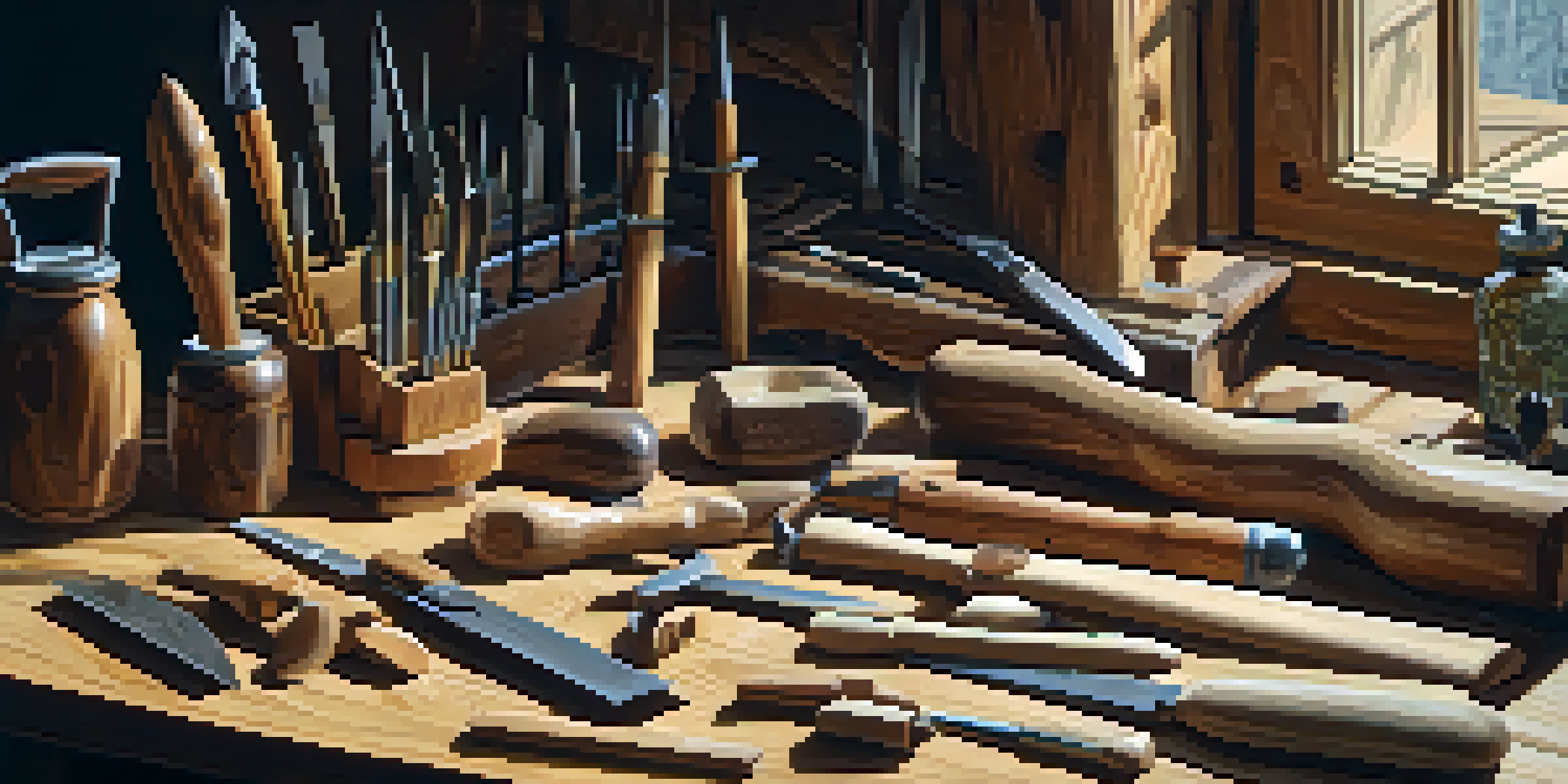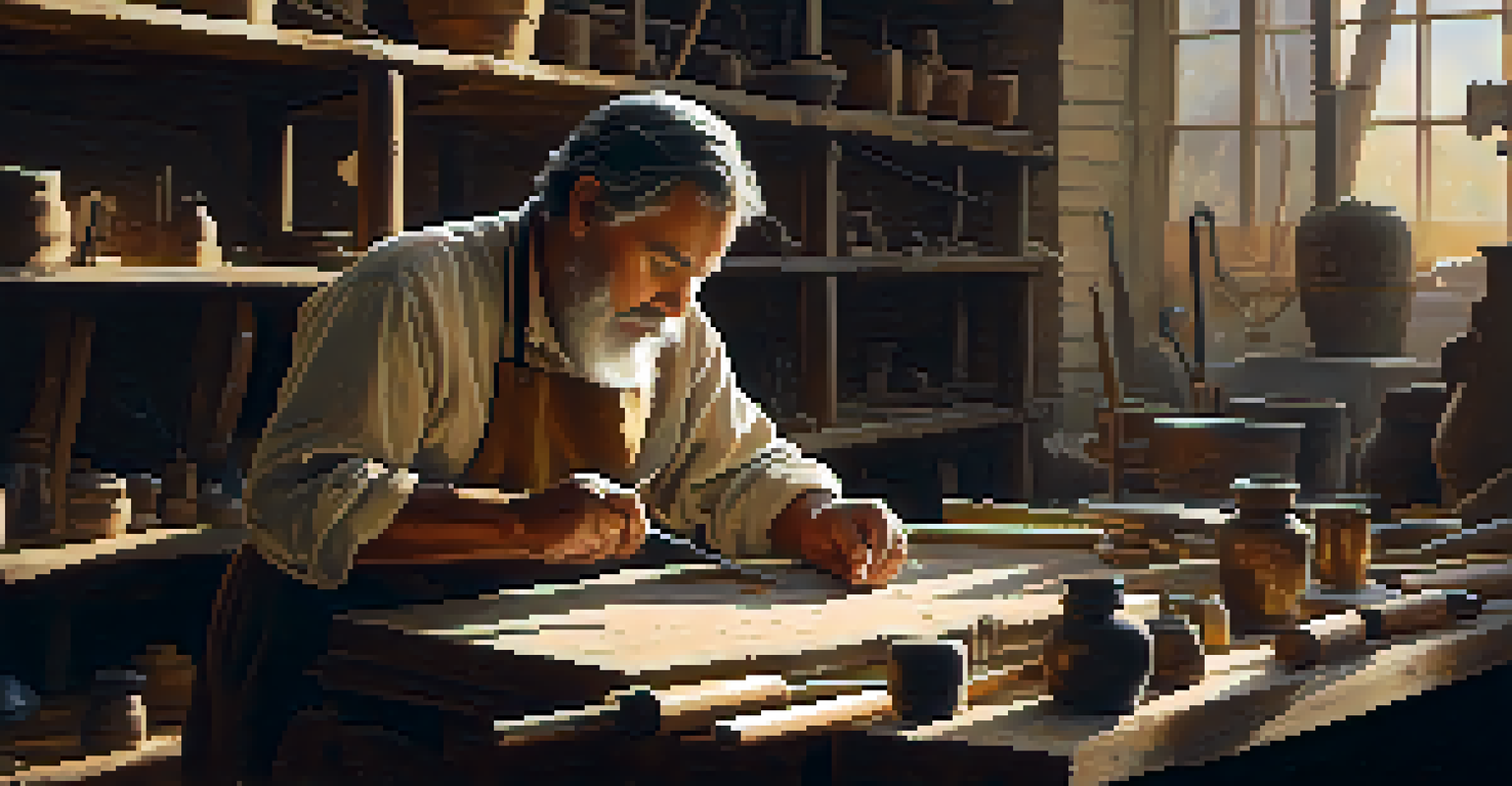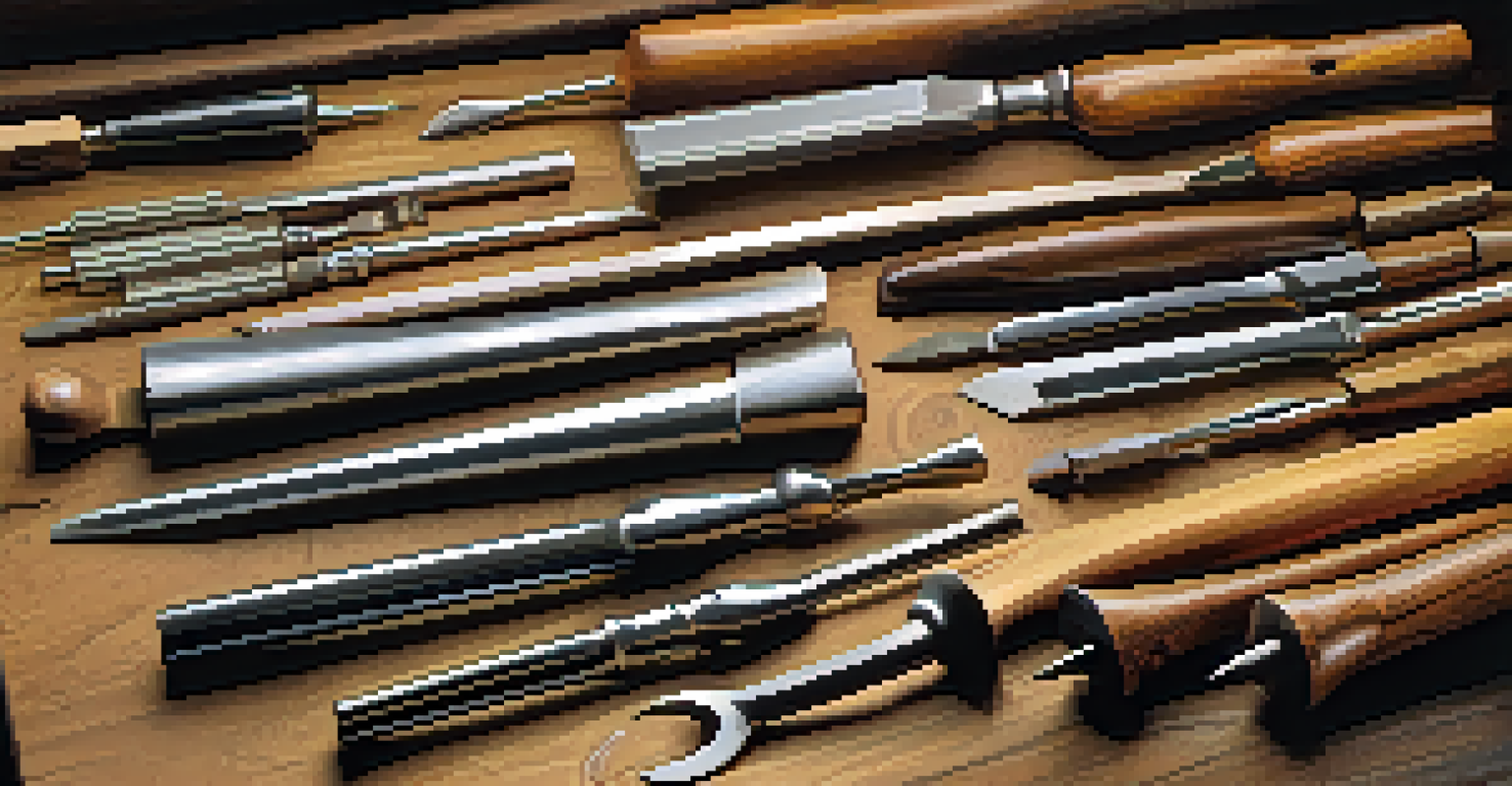Carving Tools Essential for Historical Artifact Restoration

Understanding the Importance of Carving Tools in Restoration
Carving tools play a crucial role in the restoration of historical artifacts, as they help preserve the integrity of these items. These tools allow restorers to carefully remove damaged areas while maintaining the original craftsmanship. By using the right tools, restorers can ensure that they don't inadvertently alter the artifact's historical significance.
The tools of the craftsman are not just tools; they are extensions of the artist's intent.
Moreover, the precision offered by specialized carving tools can make a significant difference. For instance, a finely crafted chisel can help in delicate tasks, such as removing paint layers without harming the underlying material. This attention to detail is essential in maintaining the artifact's authenticity.
In essence, carving tools not only aid in the physical restoration process but also connect us to the past. They allow us to engage with history in a tangible way, ensuring that future generations can appreciate and learn from these artifacts.
Types of Carving Tools Commonly Used in Restoration
There is a variety of carving tools that restorers rely on, each designed for specific tasks. For example, chisels come in different shapes and sizes, making them versatile for various kinds of materials and details. A flat chisel might be perfect for broader surfaces, while a v-shaped chisel could excel in intricate designs.

Another essential tool is the scalpel, known for its precision. It's often used for fine detailing, such as cleaning up edges or small areas where more significant tools could cause damage. Additionally, gouges are popular for hollowing out wood or other materials, allowing restorers to work efficiently.
Carving Tools Preserve History
Carving tools are essential for restoring historical artifacts, ensuring their integrity and authenticity for future generations.
Understanding the function of these tools is crucial for effective restoration. Each tool serves a purpose, and using the right one can significantly enhance the quality of the restoration work.
Essential Chisels for Effective Restoration Work
Chisels are perhaps the most fundamental carving tool for restorers, and their importance cannot be overstated. They come in various types, such as bench chisels, mortise chisels, and paring chisels, each suited to specific tasks. For example, bench chisels are great for general-purpose work, while mortise chisels are designed for creating clean, precise joints.
Every restoration is a dialogue between the past and the present, requiring both skill and respect for the original work.
When choosing chisels, it's essential to consider the material being worked on. A softer wood may require a different chisel than a harder stone. This adaptability ensures that restorers can approach each project with the right tools for the task at hand.
Ultimately, investing in high-quality chisels can lead to better restoration results. Quality tools not only make the job easier but also contribute to preserving the artifact's original character.
The Role of Gouges in Historical Artifact Restoration
Gouges are specialized carving tools that are essential for working on curved surfaces or hollowing out areas. Their unique shape allows for greater control and precision in intricate designs, making them invaluable for restorers. Whether it's a wooden sculpture or a decorative piece, gouges help achieve the desired finish without compromising the integrity of the artifact.
Different types of gouges are available, such as sweep gouges and knife gouges, each serving specific purposes. Sweep gouges, for instance, are great for creating hollows, while knife gouges excel in fine detail work. Understanding which gouge to use can significantly enhance the restoration process.
Choosing the Right Tools Matters
Selecting appropriate carving tools based on the specific needs of each restoration project greatly enhances the quality of the work.
In short, gouges not only facilitate the practical aspects of restoration but also allow for a deeper appreciation of the craftsmanship involved in creating the original artifacts.
Using Knives for Fine Detailing in Restoration Projects
Knives are a crucial addition to any restorer's toolkit, particularly for fine detailing. Their sharp blades allow for precise cuts and adjustments, making them ideal for cleaning up edges or creating detailed designs. Unlike chisels, which remove larger sections of material, knives help with finesse and accuracy.
In the restoration of artifacts, every detail matters. A well-placed cut can significantly impact the overall appearance and authenticity of the piece. This is why many restorers prefer using knives for intricate tasks, as they provide a level of control that larger tools cannot.
Ultimately, incorporating knives into the restoration process can elevate the quality of the work. Their versatility allows restorers to tackle various challenges with ease, ensuring that each artifact is treated with the care it deserves.
The Significance of Quality Materials in Carving Tools
When it comes to carving tools, the materials they're made from can greatly influence their effectiveness. High-quality steel, for example, offers durability and sharpness, which are essential for achieving clean cuts. Investing in well-made tools can save time and effort in the long run, as they can withstand the rigors of restoration work.
Additionally, the handles of carving tools should also be considered. A comfortable, ergonomic handle can reduce fatigue during long restoration sessions, allowing restorers to work more efficiently. It's not just about the cutting edge; the overall design of the tool plays a vital role in its usability.
Safety is Key in Restoration Work
Prioritizing safety through proper techniques and tool maintenance is crucial for both the restorer and the artifacts being preserved.
In conclusion, prioritizing quality materials in carving tools can enhance the restoration process significantly. This attention to detail reflects the respect restorers have for the artifacts they are working on and the history they represent.
Essential Safety Practices When Using Carving Tools
When working with carving tools, safety should always be a top priority. Proper techniques, such as keeping fingers clear of the cutting edge and maintaining a stable work surface, can prevent accidents. Restorers should also wear protective gear, like gloves and eyewear, to safeguard against potential injuries.
Another vital aspect of safety is maintaining tools in good condition. Dull tools can lead to mistakes and increased risk of injury, so regular sharpening and maintenance are essential. By keeping tools sharp, restorers can work more efficiently and safely.

Ultimately, fostering a culture of safety not only protects the restorer but also ensures the integrity of the artifacts being worked on. A safe working environment is crucial for achieving the best results in any restoration project.
Tips for Selecting the Right Carving Tools for Restoration
Choosing the right carving tools for restoration can be a daunting task, especially with so many options available. One effective approach is to assess the specific needs of each project. Different materials and artifacts may require different tools, so understanding the requirements is crucial.
Additionally, seeking recommendations from experienced restorers can provide valuable insights. They can share their experiences regarding which tools work best for particular tasks and why. This firsthand knowledge can help newcomers make informed decisions.
Finally, don't overlook the importance of trying out tools before purchasing. Many suppliers offer the chance to test tools, allowing restorers to find the perfect fit for their style and needs. By taking the time to select the right tools, restorers can enhance their efficiency and effectiveness in preserving history.